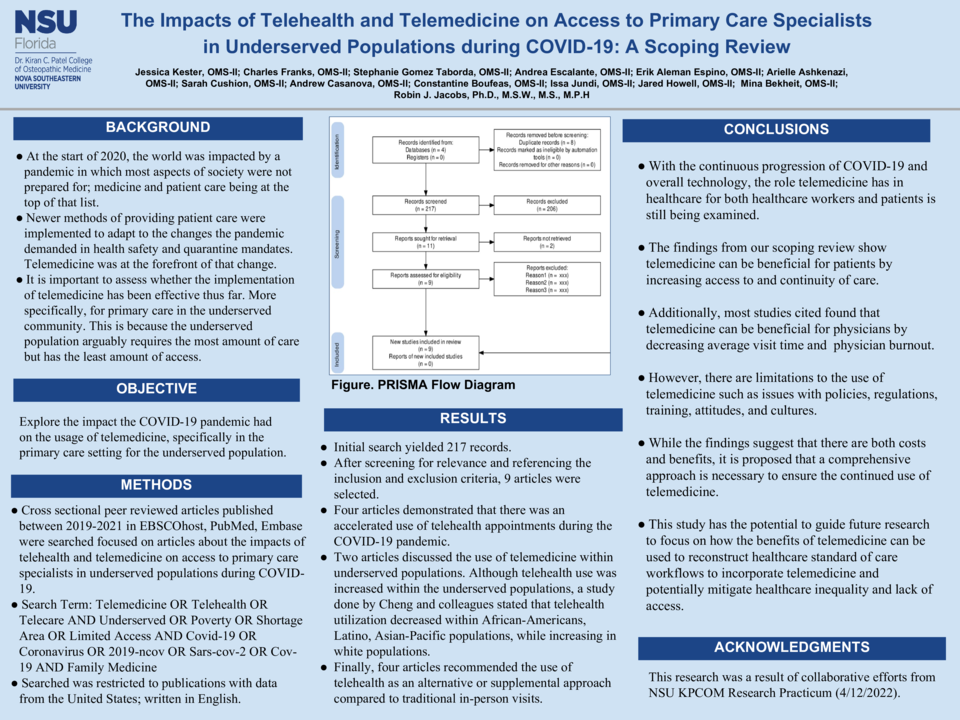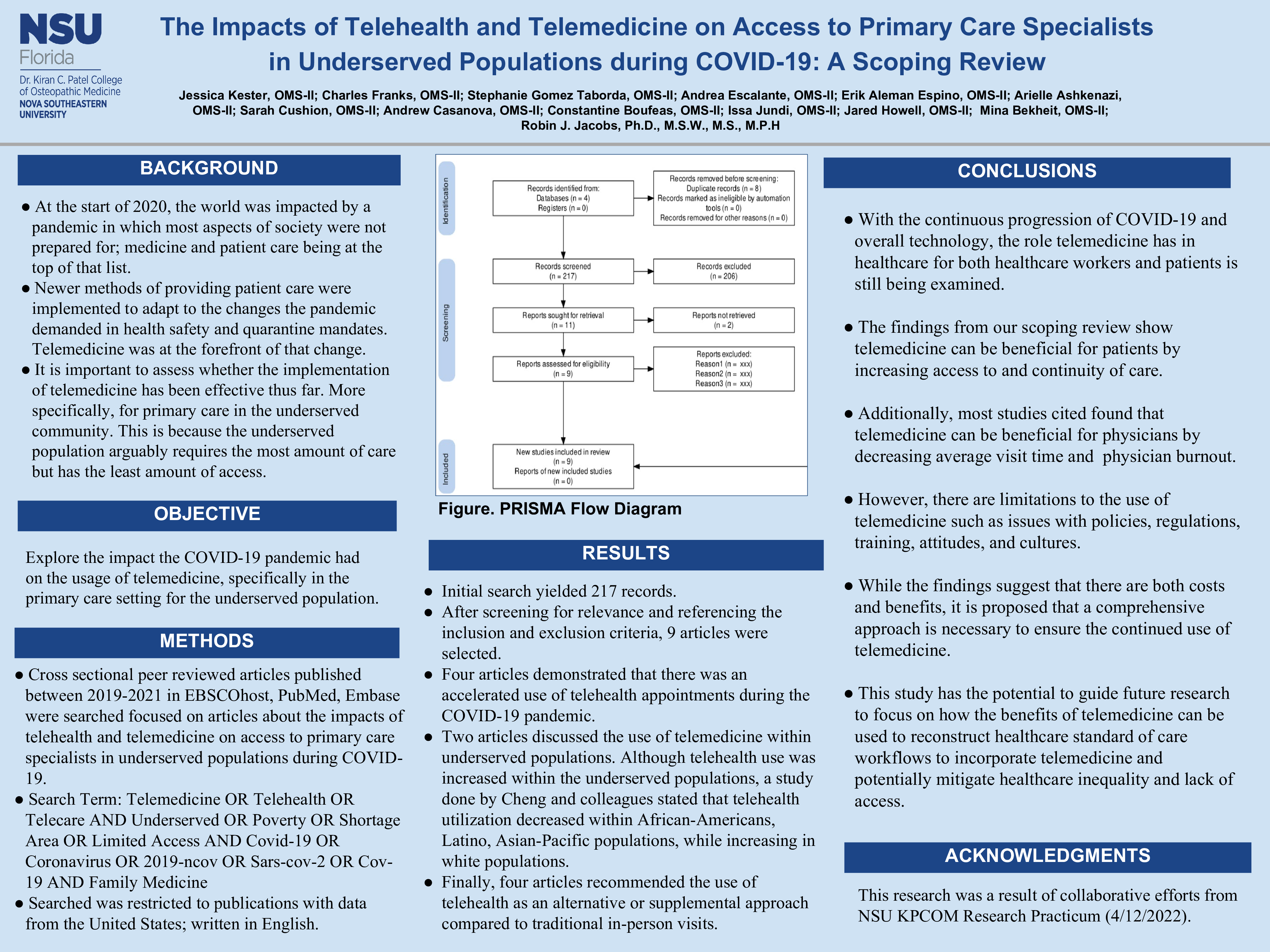The Impacts of Telehealth and Telemedicine on Access to Primary Care Specialists in Underserved Populations during COVID-19: A Scoping Review
Dr. Kiran C. Patel College of Osteopathic Medicine, Nova Southeastern University, Fort Lauderdale, USA
Jessica Kester, Charles Franks, DODr. Kiran C. Patel College of Osteopathic Medicine, Nova Southeastern University, Fort Lauderdale, USA
Charles Franks, Stephanie Gomez TabordaDr. Kiran C. Patel College of Osteopathic Medicine, Nova Southeastern University, Fort Lauderdale, USA
Stephanie Gomez Taborda, Andrea Escalante, DOstudent, Nova Southeastern University Dr. Kiran C. Patel College of Osteopathic Medicine, Miami, USA
Andrea Escalante, Erik Aleman Espino, DO, Resident PhysicianDr. Kiran C. Patel College of Osteopathic Medicine, Nova Southeastern University, Fort Lauderdale, USA
Erik Aleman Espino, Arielle Ashkenazi, Medical StudentDr. Kiran C. Patel College of Osteopathic Medicine, Nova Southeastern University, Fort Lauderdale, USA
Arielle Ashkenazi, Sarah CushionMedical Student, Nova Southeastern University Dr. Kiran C. Patel College of Osteopathic Medicine, Davie, Fl, USA
Sarah Cushion, Andrew Casanova, Medical StudentDr. Kiran C. Patel College of Osteopathic Medicine, Nova Southeastern University, Fort Lauderdale, USA
Andrew Casanova, Constantine BoufeasDr. Kiran C. Patel College of Osteopathic Medicine, Nova Southeastern University, Fort Lauderdale, USA
Constantine Boufeas, Issa Jundi, DODr. Kiran C. Patel College of Osteopathic Medicine, Nova Southeastern University, Fort Lauderdale, USA
Issa Jundi, Jared Howell, Medical StudentDr. Kiran C. Patel College of Osteopathic Medicine, Nova Southeastern University, Fort Lauderdale, USA
Jared Howell, Mina BekheitDr. Kiran C. Patel College of Osteopathic Medicine, Nova Southeastern University, Fort Lauderdale, USA
Mina Bekheit, Robin J. Jacobs, Professor, MPH, PhDMedical and Behavioral Research; Health Informatics; Medical Education, Nova Southeastern University, Fort Lauderdale, USA
Robin J. Jacobs





